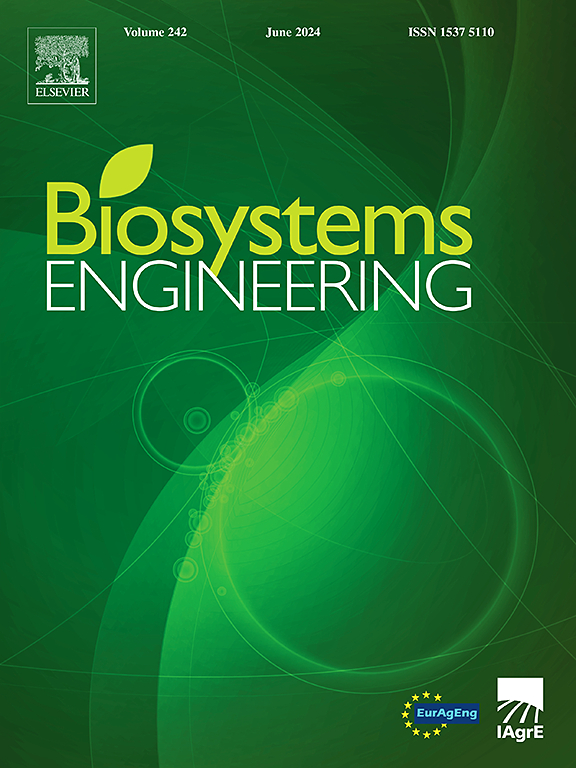Stability control of a wheel-legged mobile platform used in hilly orchards
IF 5.3
1区 农林科学
Q1 AGRICULTURAL ENGINEERING
引用次数: 0
Abstract
This study proposes a dynamic control strategy based on hierarchical control to improve the driving stability of a compact skid-steering quadrupedal wheel-legged mobile platform in hilly orchards. The upper layer of the control strategy includes the velocity control submodule based on Proportional-Integral-Derivative (PID) control, a state observer based on the Extended Kalman Filter (EKF) algorithm and an expected yaw torque controller. The lower layer of the control strategy is a torque distribution controller based on the improved axle load proportional distribution algorithm, which redistributes the total driving torque and the yaw torque. The mathematical model of the mobile platform using the dynamic control strategy was established and simulation tests under different working conditions in hilly orchards were carried out. The results showed that the control strategy can overcome the driving stability problem caused by the swing of the wheel legs. The side slip angle was controlled within ±0.2°, the expected yaw rate can be accurately tracked with a maximum error of 0.0075 rad s−1, the maximum relative error of velocity during stable driving was 1.2 %, and the maximum relative error of the driving trajectory was 3 %. A field experiment was carried out in the orchard. The results indicated that the maximum relative deviations of the experimental trajectory and driving velocity of the mobile platform, which occur during steering conditions, were <1.5 % and 10.2 %, respectively, when compared to simulated and expected values. This confirmed the effectiveness of the driving stability control strategy.
丘陵果园用轮腿移动平台的稳定性控制
提出了一种基于层次控制的动态控制策略,以提高小型滑转向四足轮腿移动平台在丘陵果园中的行驶稳定性。控制策略的上层包括基于比例-积分-导数(PID)控制的速度控制子模块、基于扩展卡尔曼滤波(EKF)算法的状态观测器和期望偏航力矩控制器。控制策略的下层是基于改进轴载比例分配算法的转矩分配控制器,对总驱动转矩和偏航转矩进行重新分配。建立了采用动态控制策略的移动平台的数学模型,并在丘陵果园不同工况下进行了仿真试验。结果表明,该控制策略能够克服因轮腿摆动引起的行驶稳定性问题。侧滑角控制在±0.2°以内,可准确跟踪期望横摆角速度,最大误差为0.0075 rad s - 1,稳定行驶时速度的最大相对误差为1.2%,行驶轨迹的最大相对误差为3%。在果园里进行了田间试验。结果表明,在转向工况下,移动平台的实验轨迹和行驶速度相对于仿真值和期望值的最大相对偏差分别为1.5%和10.2%。验证了驱动稳定性控制策略的有效性。
本文章由计算机程序翻译,如有差异,请以英文原文为准。
求助全文
约1分钟内获得全文
求助全文
来源期刊

Biosystems Engineering
农林科学-农业工程
CiteScore
10.60
自引率
7.80%
发文量
239
审稿时长
53 days
期刊介绍:
Biosystems Engineering publishes research in engineering and the physical sciences that represent advances in understanding or modelling of the performance of biological systems for sustainable developments in land use and the environment, agriculture and amenity, bioproduction processes and the food chain. The subject matter of the journal reflects the wide range and interdisciplinary nature of research in engineering for biological systems.
 求助内容:
求助内容: 应助结果提醒方式:
应助结果提醒方式:


